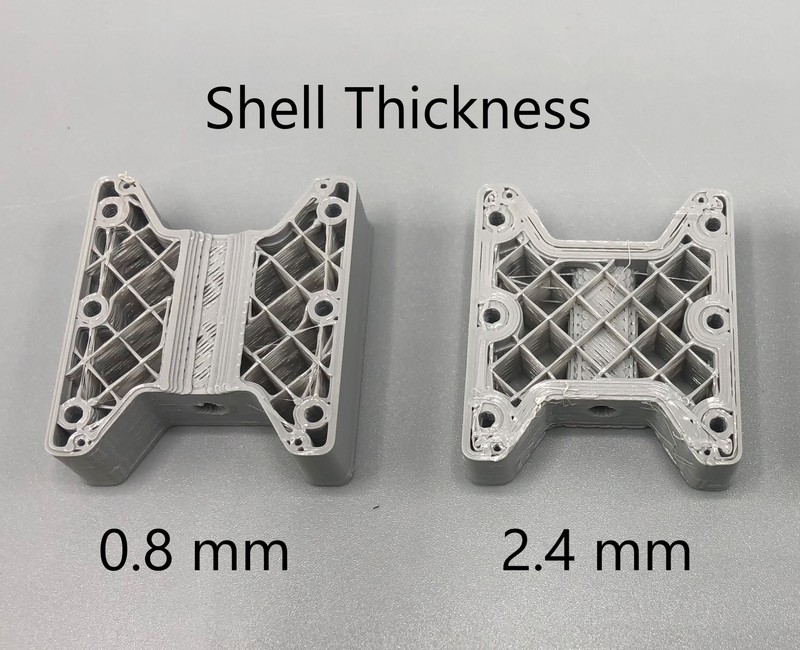Shell Thickness for 3D Printed Parts

The shell thickness, or wall thickness, plays a significant role in 3D printed part strength. Shell Thickness refers to the thickness of the outer surfaces of the part. While increasing the shell thickness will increase material usage, it has a significant effect on strength, moreso than infill percentage in most cases.

Most slicers, including Cura, use two walls as the default setting. We recommend using at least two, since one can lead to surface quality issues in addition to reduced strength.
Note: If you do want to print a single wall, we recommend using a continuous spiral contour, also known as vase mode. In this mode, the nozzle will trace a single wall in a spiral to form the entire part with no interruptions. However, this mode is only viable with certain geometries, and for parts that will be hollow.

In addition, since the wall thickness only applies to the outer shell, it will not increase material usage nearly as much as infill percentage with larger parts.
Similar to the wall thickness, you can also configure the number of solid layers on the top and bottom of the model. We recommend that you print at least 5 solid layers, especially on the top surface in cases where the model has a flat top surface. Since this surface will be porinted on top of the infill layers that are not solid, these layers are needed to get a smooth surface finish.

The bottom layer can typically use fewer solid layers since it is printed on the solid build platform, however you will want to use more layers if the part will need to be strong, similar to increasing the wall thickness to improve horizontal strength.